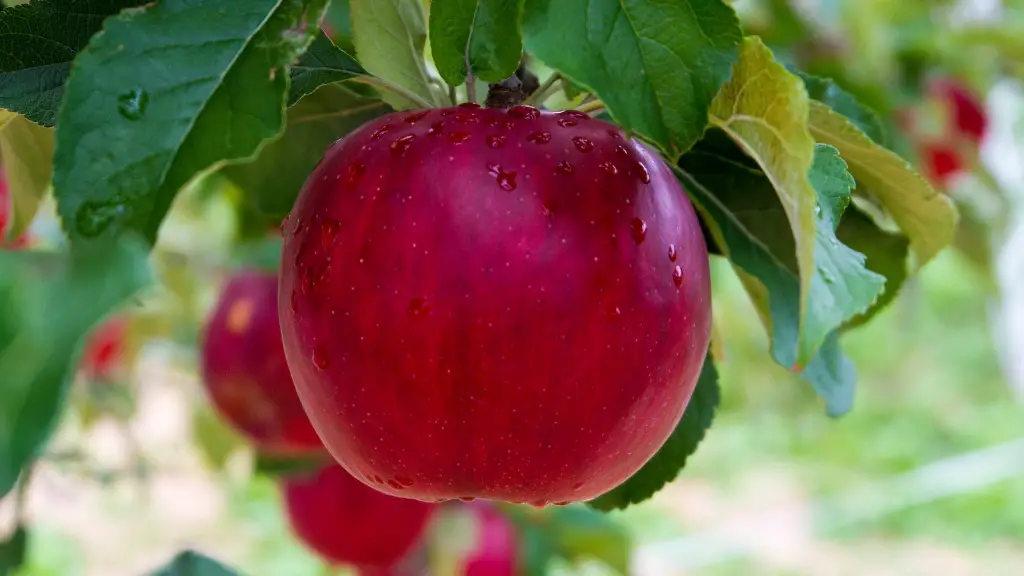Introduction to Avocados
Avocados are a type of fruit that is native to Central and South America and is nowpopular all over the world. The fruit’s creamy texture and nutty flavor make it extremely versatile for use in both sweet and savory recipes. Avocado trees are evergreens and can live for hundreds of years. The tree can reach heights of up to 30 feet and its leaves are thick, waxy, and dark green. The flavors of the fruit can also vary depending on the variety of the tree grown.
When Do Avocado Trees Bear Fruit?
Avocado trees begin to bear fruit after the first two to three years of growth, but it may take four or five years for the tree to reach peak production. The quality of the soil, the health of the tree and the care it receives will impact the rate of fruit production and the amount of fruit that is produced. As a general rule, tree owners should expect to begin harvesting avocados within three to four years of planting the tree.
Avocado trees require a lot of attention and care in order to grow and bear fruit, and those who own the trees should be prepared to provide adequate water and fertilizer. Trees that are regularly watered and fertilized will produce more fruit and, in some cases, at a faster rate.
It is essential for avocado tree owners to provide their trees with the necessary nutrients in order to encourage healthy growth and abundant fruit production. With regular pruning and timely fertilization, trees can be kept healthy and productive for many years.
Seasonal Variations in Avocado Production
Avocado production follows distinct seasonal patterns that depend on the climate in a particular region. In regions where temperatures are mild year-round, like California, avocados are harvested from May to October. However, in cooler climates, like Florida and Hawaii, the harvesting season is from May to September.
Climate also determines when and how much fruit a particular tree will produce. For example, in areas with hot, dry and sunny conditions, avocado trees require more water during the summer months. Trees in cooler climates will typically have prolonged flowering periods and a more intense period of fruit production.
Encouraging Growth in Your Avocado Tree
In order to promote and encourage growth in avocado trees, owners should perform regular pruning and trimming. This encourages new growth, enhances the structure of the tree, and allows for efficient fruit production. Trees should also be watered on a regular basis in order to ensure healthy growth and abundant fruit production.
Avocado trees do benefit from fertilizers, but they should not be over-fertilized. Too much fertilizer can burn the tree’s roots and prevent fruit production. Instead, tree owners should use organic fertilizers, which are often rich in nitrogen and will greatly benefit the tree.
Pest Control for Avocado Trees
Avocado trees are vulnerable to several pests, including aphids, scale, mites, and mealybugs. Pests can damage the leaves, fruit, and bark of the tree, and can reduce the tree’s fruit production. To protect the tree from damage, tree owners should inspect the tree on a regular basis, looking for signs of pests.
If fungi, molds, or bacteria are present, tree owners should act quickly to address the problem. Pruning the infected areas and treating them with fungicides can help to reduce pest infestations and protect the tree from further damage.
Harvesting & Storing Avocados
When the time comes to harvest the avocado fruit, it is important to use caution. The fruit should be gently lifted and pulled off the tree, as jabbing it with a knife can damage the tree’s bark and leaves. The best way to know when the fruit is ripe and ready to be harvested is to observe its color.
Avocados that are ripe will have a deep, dark green color and can be stored at room temperature. If the avocado is not quite ripe, it can be wrapped in a paper towel and stored in the refrigerator for a few days until it is ready to be consumed.
How Can Avocados Be Used?
Avocados are extremely versatile and can be used in a variety of recipes. The fruit can be mashed and used as a spread for sandwiches, added to salads, and even used to make creamy desserts. Avocados are also rich in healthy fats, vitamins, minerals, and fiber, making them a nutritious addition to any diet.
Nutritional Benefits of Eating Avocado
Avocados offer many health benefits, including heart health, weight loss, and disease prevention. They are an excellent source of healthy fats, including monounsaturated and polyunsaturated fatty acids, and are also rich in potassium and fiber. Eating avocados can also help regulate blood sugar levels and improve cholesterol levels.
Avocados are also high in vitamins and minerals, including vitamin K, folate, vitamin B6, and vitamin C. Eating avocados regularly can help a person meet their daily nutritional needs, as well as provide an array of health benefits.
Conclusion
Avocado trees are relatively easy to grow and can bear fruit within three to four years. It is important to provide adequate water and fertilizer to encourage healthy growth and abundant fruit production. To ensure a successful harvest, it is also important to monitor the tree for pests and to prune the tree regularly. Avocados are a versatile and nutritious fruit, with numerous health benefits. With the right care, avocado trees can produce fruit for many years.


